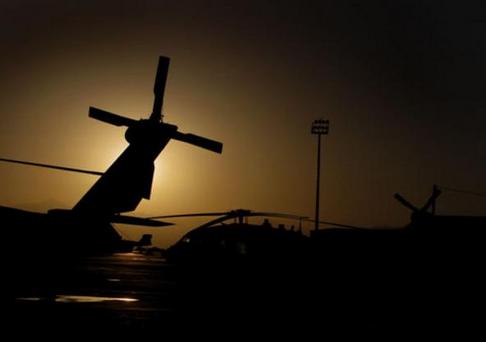At Bagram Air Field, Afghanistan, more than 90 percent of the Medical Evacuation, or MEDEVAC, missions are to help Afghans, both local nationals as well as Afghan National Army soldiers. The patients who take these flights have medical emergencies and need to be transferred to a full-service hospital. The hospital at Bagram Air Field is prepared to handle most medical issues that may arise in the field or on base. The MEDEVAC crews transfer everything from very ill children to gravely wounded soldiers and civilians.
The medics are as efficient as they are compassionate. Despite tight quarters, the medics attend to their patients’ medical needs while making their patients as comfortable as possible. When patients are stable, the medics are able to provide comforting measures, like a stuffed toy for an ailing child or a pat on the hand for a wounded soldier. Even after the mission is over, the flight crews frequently check on the status of their patients at Bagram Air Field Hospital.









4 Comments
The Thunder Run has linked to this post in the blog post From the Front: 04/30/2008 News and Personal dispatches from the front lines.
Phil Peterson,
Thank you for your photo essay. No one pays more attention to the well being of their people than the US armed forces. It’s nice to see something reassuring in the midst of all of this. It’s not the sort of thing that garners much attention in the press. Medevac capability truly is one of the amazing organizational capabilities to come out of the second half of the twentieth century. Our current civilian Medevac capability is a direct outgrowth of what was learned in Korea and Vietnam. A whole generation of Medevac pilots train in Vietnam essentially became the first generation of civilian Medevac pilots. Without its military counterpart providing much of the initial development and ongoing training it is hard to say how much and when civilian Medevac capability would have developed. The sudden development that was seen in the 70’s would not have happened and independent development would have been very costly. Perhaps prohibitively costly. It is perhaps the one place that countless lives have been saved by lessons learned during past conflicts.
Excellent pictorial.
Peace
As a fomer medic with the 57th Dustoff. (1971). It’s great to read this news.
Keep it up guys.